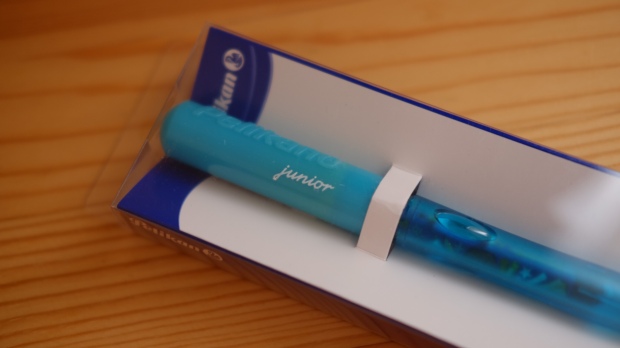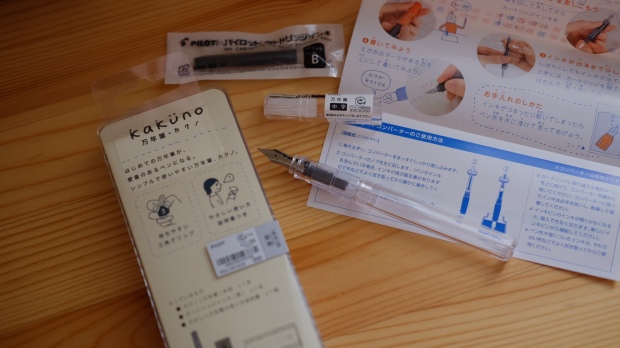Back in 2009, I’ve purchased this old school dip pen with detachable nibs and wooden handle but never really got into using it as much. Mainly because writing in the wrong angle was challenging for my left hand. The most difficult part of it was trying to avoid pen stains on my pinkie and rub on my writing. Fast forward ten years later, I found two fountain pens recommended by the internet and this has motivated me to try them again. I did try the very low cost Pilot petit pen, religiously for work, but it leaked after constant use. It was also very irritating that the ink always rubs into my pinkie and takes a long time to wash it off.

First up of the recommended fountain pens for beginners is Pelikan’s Pelikano Junior. I’ve never heard of this before until recently I came across such in an instagram account I’ve been following. On my search, I found that it is a German company that has been producing fountain pens since 1832!!!

The Pelikano Junior is an evolution of their Pelikano pens for children and they come in six bright colors, red, anthracite (black), blue, turquoise, purple and pink. Featured here is in the color turquoise, which for me is a fun color as it reminds me of the sea. The package comes with the nib and body including the clip-less cap and a blue ink cartridge. It also provides you with an instruction on how to set up the pen and a name sticker for your name (just in case you lose it).

I tried writing it on the Stalogy 365 and it was fairly easy and smooth. The grip on the nib was helpful to maintain the correct angle and pretty much a guide for practicing on writing with fountain pens.

A closer look at the writing, you could clearly see the elegance of the fountain pen as it gives you that classic thick and thin line gradation. This is indeed a recommended fountain pen for left-handers and for beginners!
Next up is Pilot’s Kakuno pen which has the similar triangular holder by the nib. The typically comes in black or white body and colorful caps in pastel and basic colors but what I have in hand is the transparent one. It looked cool to me as you could see what ink color you’ve got on the pen.

It came with a black ink cartridge and a body and nib, also with a clip-less cap and instructions on how to use it. In addition to the usual how-to setup, also written was how to load it with a different ink using a converter. First time I heard of a “converter” and I learned that it was for fountain pen enthusiasts to enjoy different ink colors in their fountain pens. I only know of ink in bottles for my glass type dip pen and thought that, such were for dipping to load the ink onto the pen to write. This reminds me to post a review of that soon, watch out for it!

A writing test of the Kakuno gives you an idea that it wasn’t left-hand friendly. You won’t clearly see the angled lines when writing on the left hand and it was scratchy as opposed to handling the pen with the right hand.

A closer look of the writing shows that writing with the right hand has more prominent lines compared with the left. This only means that the angle of the pen has to be on the right side for it to provide the best writing experience 😦
More writing tests done on the traveler’s note and on my newest addition from Muji (check out my post on this soon after) revealed that I feel more comfortable using the Pelikano than the Kakuno!


On another criteria, I didn’t really liked the scratchy squeaky sound on the Kakuno upon screwing in the body on the grip and nib. Unlike the Pelikano, which made no uncomfortable sound, I very much adore this pen for the ergonomic design that is left-hander-friendly!
~ヾ(^∇^) Happy brewing!
-Louie






